This week in Linux, we have a ton to talk about. So much happened. I took last week off because of the holidays, and there’s just a lot happened in that period of time. So let’s talk about it. First, we have Xfce because Xfce 4.20 has been released. openSUSE has announced a new package management tool. There is now an alpha release for the Serpent OS distribution. There’s also a Steam Winter Sale that’s going on right now. And we’ve got news from DreamWorks. Yes, that DreamWorks. All of this and more on This Week in Linux, the weekly news show that keeps you up to date with what’s going on in the Linux and open source world. Now let’s jump right into Your Source for Linux GNews.
Support the Show
Become a Patron = tuxdigital.com/membership
Store = tuxdigital.com/store
Chapters:
00:00 Intro
00:50 Xfce 4.20 Released
07:35 openSUSE Announces New “YQPkg” Package Management Tool
11:23 Serpent OS Alpha Release
13:30 Sandfly Security, agentless security platform [ad]
14:54 Fedora Asahi Remix 41 Released
18:00 Darktable 5.0 Released
21:28 Steam Winter Sale & more from Valve
22:14 Valve joining Lenovo at CES 2025
23:02 Steam Replay 2024
23:40 New Steam Record of 39 Million Concurrent Users
24:26 OpenMoonRay 1.7 Released
25:46 MakuluLinux LinDoz 2025 Released
29:20 Support the show
Links:
- Xfce 4.20 Released
- openSUSE Announces New “YQPkg” Package Management Tool
- Serpent OS Alpha Release
- Sandfly Security, agentless security platform [ad]
- Fedora Asahi Remix 41 Released
- Darktable 5.0 Released
- Steam Winter Sale & more from Valve
- https://store.steampowered.com/
- https://www.gamingonlinux.com/2024/12/valve-will-join-lenovo-at-ces-2025-for-the-future-of-gaming-handhelds/
- https://www.gamingonlinux.com/2024/12/steam-winter-sale-is-live-and-steam-awards-voting-is-now-open/
- https://www.gamingonlinux.com/2024/12/steam-replay-for-2024-is-live-to-show-off-all-those-hours-you-played/
- https://www.gamingonlinux.com/2024/12/steam-sets-a-new-record-with-39-million-concurrent-users-online/
- OpenMoonRay 1.7 Released
- MakuluLinux LinDoz 2025 Released
- Support the show
Transcript
View full transcript
Michael:
[0:00] This week in Linux, we have a ton to talk about. So much happened. I took last week off because of the holidays, and there’s just a lot happened in that period of time. So let’s talk about it. First, we have Xfce because Xfce 4.20 has been released. openSUSE has announced a new package management tool. There is now an alpha release for the Serpent OS distribution. There’s also a Steam Winter Sale that’s going on right now. And we’ve got news from DreamWorks. Yes, that DreamWorks. All of this and more on This Week in Linux, the weekly news show that keeps you up to date with what’s going on in the Linux and open source world. Now let’s jump right into Your Source for Linux GNews.
Michael:
[0:50] This episode of TWIL is sponsored by Sandfly Security. More on them later. The Xfce team have announced the latest release of their lightweight Linux desktop with Xfce 4.20. If you are an Xfce user, then you surely will light up your day with this news. Xfce 4.20 is the latest stable release after two years of development, and it is coming with a lot of changes, including some work for Wayland support. Now, it’s not fully available entirely just yet, but they are working on it and have made a lot of progress over the past couple of years, and they have a lot of bug fixes in this as well as performance fixes and so many more. So let’s take a look at the Xfce 4.20 tour.
Michael:
[1:34] Xfce4.20 has experimental Wayland support, as I mentioned, across most components. They have a new library called libxfce4windowing and this is a windowing concept abstraction layer library for X11 and Wayland. Now, basically this is designed to be a tool to work agnostically on X11 and Wayland, though Wayland support is not as robust as X. So the ability is to have, the idea is to have a library that can do windowing, which would be showing screens or showing windows or workspaces and that sort of stuff, but not having to be just on Wayland or just on X, but to do.
Michael:
[2:16] Essentially. There is no compositor just yet in Xfce 4.20, so they suggest to use LabWC or Wayfire for those who would like to run the Wayland instance. Also, they’ve made a lot of improvements to Thunar File Manager. So Thunar has now the ability to do auto-opening of folders during the drag and drop actions. Also, they have changed some stuff with the toolbar, so you can have new buttons in the toolbar editor with new tab and new window, for example. They’ve also added symbolic icons to the sidebar of Thunar. You previously were only having the option for colored icons. You can still do the colored icons if you want to, but now you can also do symbolic icons, which are effectively like monochromed single color icons. They’ve also done some improvements to the toolbar behavior of Thunar. They’ve enhanced the remote file management for like, for example, IPv6 URLs or symbolic links are now better handled in Thunar. They’ve also made better accessibility for the search results.
Michael:
[3:15] So you can now see the search results before you complete the search. So it starts searching as you’re typing. Also, a split view pane has been added. And they’ve also streamlined the file transfer dialog functions. They’ve also made some enhancements for the application finder. So they’ve improved the keyboard navigation. So you can use keyboard shortcuts to navigate and also execute commands and apps. You also have the ability to have right click actions now and they have an auto close on loss of focus so if you are you activate the application finder and then leave the finder it will close itself rather than just staying open waiting for you to interact with it that’s good because having to close it every time is a little bit irritating so that’s really good they’ve also made it so that you don’t have to double click icons or items to launch them you can just single click them now which is much better They’ve also made some changes to the panels and the applets. So the clock applets supports a 24-hour analog clock and inactive segment visualization.
Michael:
[4:17] Also, they have now added a hover functionality. So if you hover over the show desktop applet, it will show it rather than just waiting for you to click it. They’ve also added a configurable panel border width, so you can choose how big the border width is. And you also have improvements to the applet management. So like you can do bulk removal, you can have a consistent icons and stuff like that. So they have improved a lot of the settings as well. So the display settings now has better scaling previews. It also has improved the mirroring management. So if you’re talking about like being able to mirror one display to another, and also they’ve done some improvements to mouse and touch pad settings. So there’s now a toggle for adaptive pointer acceleration, and they’ve also added high res scrolling support. And with the power settings they’ve added power mode switching through the power profiles daemon and also they’ve made some improvements for a hybrid sleep support so if you have hybrid graphics in your hardware you can now have better sleep sleep support for that and they’ve also made some improvements to gamma correctness for the desktop settings as well as customizable icon text color and more they’ve also made some updates to their desktop icons so the sorting folders before files is now the default.
Michael:
[5:34] They’ve also disabled confirmation prompts for the desktop icons. And also the shortcut editor now supports multiple actions, as well as some changes to the appearance settings. So icon themes loaded in separate threads for performance and that sort of thing. They’ve also removed light locker to have better lock screen management.
Michael:
[5:55] And also they have made some improvements for icon scaling and many other things for the xf desktop and there’s also many many more if you want to get the full list of everything you’ll find the link to the release guide in the show notes but this is a lot of new stuff a lot of improvements and i’m really happy to see another release of Xfce because the Xfce desktop has been is a classic it’s been around the it’s been around basically the longest it’s it’s older than gnome and older than KDE Plasma and well older than KDE in general but it’s also one of those things that a lot of people love because it doesn’t change that much it’s like the good old reliable style where they make updates they make significant updates but they’re not going to be like huge.
Michael:
[6:43] Game changing updates most of the time and this is one of those release so it’s a big update with a lot of new stuff a lot of new support for like Wayland and that sort of thing but it’s not going to be like a huge interface exchange and you know you having to get used to new ways of doing everything that’s not really typically what Xfce does and this is great but i would hope that the Xfce team can get more people in the development because two years between releases is a bit much so hopefully we can get some more people on the project to increase that speed because that’s that’s like the only thing that’s a negative really for Xfce if they could get some more developers we get more releases more improvements that would be awesome so but for those who are Xfce fans i’m sure you’re gonna.
Michael:
[7:30] You’re light up your day with this release of Xfce 4.20 open susa has announced a new package management tool for their distribution called yq package or yq pkg.
Michael:
[7:43] And this is a tool that is basically an alternative to Yast. Now, Yast is, you know, some people like Yast and some people don’t. Sometimes it’s a little bit too much for some people. And this is a more simplistic thing. So in this article, they talk about it not having any dependencies of Yast. So it says free from Yast dependencies. But when you go to the YQPKG, they give you more details about the fact that it’s more of a fork standalone version of something in Yast. So the YQ package selector has now been forked out of Yast. So it doesn’t have Yast dependencies, but it’s still kind of Yast in the same time. The way it’s worded is a little different. So it is a Yast alternative, but it’s still, it’s kind of Yast-ish.
Michael:
[8:33] Yasty. It’s very Yasty. So this very much reminds me of Synaptic or Dragora. It’s not necessarily a modern style application store. It’s more of a package management tool. They do call it a package management tool, but it’s more of a synaptic style, Dragora style, where it’s just giving you the list of all the packages you can install and check and add them at that point, which is not necessarily bad, but I would prefer that they would go a different route and go with the more visual modern style where the interaction is more intuitive and more you know streamlined and that sort of stuff because this blog post by the way it seems very chat gpt or ai written maybe it’s not but it seems like it but it’s saying it’s a lightweight intuitive alternative i don’t know what makes this alternative this alternative intuitive i mean yes if you are familiar with synaptic or dragora then sure but that’s kind of it like for example it says patterns you know people who are beginners wouldn’t know what that is and even people who are technical experience wouldn’t know what that is because that’s a specific thing for them for open susa and susa and then you have all these different desktop environment options and stuff and it’s obviously clear that these will not all work at the same time so.
Michael:
[9:57] It doesn’t really give that expression of like, you know, this is a streamlined curated thing. So I’m not really sure how they, how it’s intuitive. I would not classify it as intuitive, but it’s still something that’s useful because a lot of people do like package management tools like Synaptic or Dragora. So I’m not saying it’s a bad idea, but I do think it’s something that’s not necessarily the best approach because a lot more people, if you want to get beginners using your software, you don’t want to give them this kind of thing. But it is worth noting that this is an alpha stage project. They say it down here, halfway down the article, it says it is recommended to avoid using it on critical production systems at this point. It doesn’t necessarily say why. It’s still in active development. Well, most of the time you want it to be in active development, right? So I’m not sure what that means. But if you scroll up here, it does say that it’s alpha. When it’s packaged, it’ll be alpha.
Michael:
[10:56] So it’s not alpha, it’s more than alpha. Anyway, this is a cool thing to see that openSUSE is making improvements and alternatives for Yast and stuff like that. But I would say in addition to this, I’m not saying don’t do this, but in addition to this, I would like to see an app store kind of like software.opensuse.org. The website is kind of in that vein, but more modern, more app store-like.
Michael:
[11:22] And that would be great. Ikey Doherty is back with his Serpent OS project and it is now available for testing in the alpha stage. If you’re not familiar, alpha means that it’s not ready for actual production use, but you could play with it if you want to. It’s currently in that phase. Now there’s a lot of new things for Serpent OS. They have updated the desktop for GNOME 47. They’ve also updated the Linux kernel to 6.12 and they have now availability to use the COSMIC desktop, which is itself in alpha. So you can have an alpha on an alpha if you wanted to do that, which could be fun, I suppose, depending on your perspective. Now, for those who are not familiar, what is Serpent OS? Well, Serpent OS is made from Ikey Doherty. It is a project to create a new OS style. It’s a, he says that it’s a stateless OS that leverages atomic updates, cutting edge tooling and rock-solid reliability to deliver a safe and efficient system end quote now this is interesting because for those who don’t know ike is also the guy who started the solus project the solus os and also started the budgie desktop although you’ll notice that budgie is not included in serpent west maybe it will in the future but right now it is not.
Michael:
[12:38] And this is interesting because he started his own distribution when he left Solus. He came back and decided to make SerpentOS. And in the meantime, he’s now joined the team back for Solus. So now there’s two IKI distros if you want to check them out. And I have links to all of this in the show notes. But this is interesting because I think the SerpentOS is a really cool idea. Now, of course, it’s alpha, so I’m not recommending anyone use it. But if you want to, you can. you even have access to use steam if you want now so you can play some games on there and they’ve also done a lot of changes for modernizing their system by switching out some stuff to rust alternatives so there’s a lot of interesting stuff they’re doing if you’d like to learn more about the different tools that they have like the new moss package management that they built for their atomic package management you can check all that stuff
Michael:
[13:28] out in the show notes This episode of This Week in Linux is sponsored by Sandfly Security. You chose Linux for its stability and security. But as these threats grow more and more sophisticated, detecting them in time without putting your systems at risk is more critical than ever. Traditional endpoint agents can cause downtime and performance issues, leaving visibility gaps. And that is where Sandfly Security jumps in because Sandfly Security has an agentless Linux security platform.
Michael:
[13:59] SanFly not only does endpoint detection and response, but also performs SSH key tracking, password auditing, and drift detection to find the widest range of threats. Whether your servers are in the cloud, on-premises, or even embedded devices, SanFly protects them all without the need of risky agent installations. Ken Kleiner, the senior security engineer at the University of Massachusetts, explains it best. SanFly is the first product I’ve seen that accurately and quickly detects thousands of signs of compromise on the Linux platform. Its unique method automates tasks that would be impossible to perform manually. So get fast, non-invasive protection for your critical systems, no agents, no downtime, just smarter security that works. Visit thisweekinlinux.com/sandfly to learn more.
Michael:
[14:48] That’s thisweekinlinux.com/sandfly, sandfly. Fedora has announced the latest availability for Fedora Asahi Remix with Fedora Asahi Remix 41.
Michael:
[15:00] Now, this is for people who are already using Mac or Apple Silicon and would like to try out Linux or people who are Linux fans who want to try out Apple Silicon, but don’t want to use Mac OS. This is a combination that you can use for either one of those things. For those who are not familiar, Asahi Linux is a project that is very cool.
Michael:
[15:20] Making it possible to use Linux on Apple Silicon. And Fedora Asahi Remix is actually the recommended project or the recommended distro for.
Michael:
[15:29] Asahi linux that you should use if you wanted to.
Michael:
[15:32] And that is because the compatibility and support is.
Michael:
[15:35] Basically like they work together to make Fedora Asahi the best option for those who want to do it so if you have Apple Silicon like an M1 or an M4 or anyone in between you can use asahi linux slash Fedora Asahi Remix and on that machine while also still having mac os it’s not more it’s not a replacement it’s more of like a dual booting system uh that’s because mac os is required for the hardware to boot which is annoying but also the way that asahi linux does it is very sleek so i think that that’s probably one of the best ways to do a dual booting system because you can basically have independent systems completely that still work perfectly fine uh it’s it’s it’s a clever way of doing it if you’d like to learn more about that i’ll have links to asahi linux in the show notes but let’s talk about what is new with Fedora Asahi Remix 41 well obviously it’s based on fedora 41 and it also has some improvements to the gaming stuff so this release of the remix includes emulation for x86 and x86 64 which 32 bit and 64 bit so that you can support uh playing triple a games on Apple Silicon which thanks to the new conformant vulcan 1.4 driver uh also i think that’s called honey crisp i think that’s the name of the driver but anyway this is.
Michael:
[17:03] Great you have the option for KDE Plasma 6.2 by default but you can also use gnome 47 if you’d like to and i think this is really cool because for those who are you know wondering why would anyone bother to do this the apple hardware apple’s a pretty popular company if you didn’t know so apple hardware is pretty popular and if anybody wants to use linux and they don’t have the ability to do it because of the custom silicon uh that would be a bummer so i think it’s fantastic that Fedora Asahi uh set linux remix is a combination like they they’re putting that effort in and i also think it’s fantastic the asahi linux project exists for that to be possible so uh at least that’s why i think it why it matters so if you were wondering why should anyone do this that’s why at least in my opinion.
Michael:
[17:55] If you’d like to learn more about
Michael:
[17:56] Fedora Asahi Remix or Asahi Linux in general, links in the show notes. There is a new version of the photography software, Darktable. Darktable 5.0 has been released. The major changes in this release include UI and UX or user interface and user experience improvements. They’ve also improved the speed for bulk operations, which is really good. So if you wanna do a lot of things at once, they have improved that, the sequencing of that as well. and the addition of the Interscript communication event to allow a running script to send messages to another running script. So what’s new in 5.0? Well, they say that they added a camera-specific styles for more than 500 camera models to more closely approximate the out-of-camera JPEG rendition. These styles only affect contrast, brightness, and saturation and do not attempt to match sharpening, denoising, or hue shifts. They also said that they added an optional splash screen showing startup progress, including estimated time remaining during the scan for updated sidecar files to dramatically reduce the time between invoking dark table and something appearing on the screen when the users has a large library this is very good so if you have a lot of files to deal with it gives you like a progress of what’s opening so this is instead of having to just wait and hope that something opens so that’s good the user interface now gives feedback while processing bulk image operations such as rating, tagging.
Michael:
[19:20] Applying styles, and edit history management, being able to undo those things rather than silently freezing until the operation completes. This is a very good improvement because some people would think that the system is just not working and that they would need to restart the application. So that’s good. Paths for drawn masks now display two bezier handles per control point, which can be moved individually. Fantastic. This allows for more precise control of the paths. This is very good because Bezier handles are very helpful in being able to control the way the path is laid out and some applications don’t have that so I’m glad to see that Darktable is one of them that does. They’ve also added a high contrast theme for bright white text on dark gray background, they’ve also enhanced the tool tips for utility module headers to provide more information about the module and many many more including more user hints new user hints on empty light table.
Michael:
[20:19] As well as being able to select when you’re selecting a style in the export module hovering over the style name in the pop-up menu displays a theme thumbnail preview the previewing the effect of the appending style, which is very good because you can see what it would look like before you actually apply it. So I love that being added. They’ve also done a lot of performance improvements by adding OpenCL implementation of color equalizer. They’ve also improved the speed of bulk image operations like I mentioned earlier by improving the speed of sidecar writes and by moving sidecar updates for many operations into background tasks, allowing the user to proceed before the write completes, which is very important because otherwise that would create that lockup kind of feel. So I love that. And there’s a lot more to this version of Darktable. Now, I’m not a big user of Darktable. I have dabbled, but I’m not a big user of Darktable. If you are a photographer or would have any information, check out the links in the show notes for more details. But also let me know in the comments below what you think about Darktable 5.0. And no, I did not intend for that to rhyme, but it did. So I’m going to keep it.
Michael:
[21:28] The Steam Winter Sale is live, so if your bank account and your wallet are not hurt by Christmas, you can still hurt it with some games. And there’s a lot of games on sale right now, so if you had anything that you had in your wish list that you were waiting for, you can now get those theoretically at this point with the Winter Sale. There’s a lot of games on sale. Of course, this is one of the biggest sales that Steam does every year. So you can get Spider-Man, Miles Morales, you can get Stardew Valley, you can get other games like Doom Eternal and so many more on sale. And some of these games are going to be supported on Linux. Not all of them, but quite a few actually. We’re over 15,000, almost 16,000 supported games at this point. So there’s quite a few on there. We also have some more Valve news. GamingOnLinux.com is reporting that Valve will join Lenovo at CES 2025 for the future of gaming handhelds. Does that mean that we’re gonna be getting a new Lenovo Legion that has SteamOS on it? Maybe, because otherwise why are they.
Michael:
[22:32] Going to that kind of event with that setup, you would assume that’s what’s going to happen. So we don’t know for sure yet, but it does suggest that that’s going to happen. And there are things that Valve updated their brand guidelines to have SteamOS being used by third-party hardware vendors. So it is quite possible that that’s what’s going to be happening, but we don’t know for sure. So I’m not going to just say that’s what’s happening, but probably. Also, GamingOnLinux.com is reporting that Steam Replay is now available. So if you would like to see what your usage on Steam was for the year of 2024, then you can check it out in the Steam Replay. Now, I’m not going to be showing you mine in this because we might be doing, I’m planning to do something on Destination Linux where we talk about our Steam Replay and you can see what kind of games we’re into and that sort of stuff.
Michael:
[23:28] This has not been confirmed that we’re going to do that, But I’m going to try to make that happen. So subscribe to Destination Linux, DestinationLinux.net, where you can get all the options to subscribe. And another thing to talk about is that Steam has set a new record for concurrent users online. And that is awesome with 39 million players.
Michael:
[23:50] A lot of them are related to Counter-Strike, obviously, but there’s quite a few players on Steam at this point. So for those who are wondering, why does the percentage of Linux gamers go up and down? Well, because there’s more and more people playing on Steam as there ever has been. So that’s part of it. But I think this is great news because it just shows that Steam’s getting even bigger and bigger. And that means there’s more incentive for Steam decks, which means there’s more incentive for SteamOS and therefore more incentive for Linux support of games.
Michael:
[24:24] So all of those sound good. Back in early 2023, DreamWorks, yes, that DreamWorks, announced their Moonray renderer is going open source with OpenMoonray. OpenMoonray is their award-winning production MCRT renderer. And this week we have another update with OpenMoonray 1.7. Open Moonray 1.7 brings a lot of improvements. There’s support for greater acceleration on NVIDIA GPUs to now include both regular rays and occlusion rays in its XPU mode. Plus it now has support for up to 16 motion blur steps or samples for meshes. Open Moonray 1.7 also updated build instruction documentation.
Michael:
[25:08] Added a threads option for Moonray bake, and added new command line tools as well as many, many more things. Now, I know what you’re thinking. Michael, what are you even talking about? Well, that is a fair question. But rather than explaining it here, I think you should check out episode 352 of my podcast, Destination Linux, to find the answer. Because I sat down with Randy Packer of DreamWorks to talk about Open Moonray and DreamWorks’ process as well as Linux’s involvement in the movie production process with DreamWorks. So go check out Destination Linux 352 to watch that interview.
Michael:
[25:45] The Makulu Linux team have announced the latest release of their distribution with Lindos 2025.
Michael:
[25:51] For those unfamiliar with Makulu Linux, it is a Debian-based distribution that uses Cinnamon Desktop with Cinnamon 6.2. And for those who are familiar with Makulu Linux and think that something I just said was wrong, well, every Makulu Linux version up until now has been based on Ubuntu, not Debian, but they switched it to Debian with this release. So they’re running Debian with the Linux 6.10 kernel. In addition to rebasing and on Debian, the biggest change of this release is actually not that. In my opinion, it’s the introduction of all the various different AI tools. So there’s a lot of them. And Makula Linux is using Electra AI, which they say is their own custom AI that powers their new AI toolbox. There is the typical AI chat option. and there’s even a feature where you can use your microphone to ask questions and have Electra respond with audio and video. This is pretty cool, but also kind of weird too, the video part. So as you can see, it’s cool and also kind of weird.
Michael:
[27:00] But there’s also a terminal mode option if you would like to use that instead of the chat option. And there’s also many other things. One of the cool things that it does is that it happens to have an automatic checking of any kind of error that happens. So when an error happens, it sends logs to the AI to have it kind of try to find out what the issue is, which I think is a clever usage of AI for sure. Now, I know everyone is asking the same thing. What about privacy and security?
Michael:
[27:29] Well, Makula Linux said that the AI never has access to your data. The error logs are sent to the AI to be scanned, but the AI is hosted on their servers. So it does seem legit, but also that your data is not being sent, but some things are being sent, just not personal data. So the way they say it is that your data is never sent, but stuff is sent. So it depends on how they’re doing that. This overall sounds interesting. and there are a lot of other tools like the AI text editor, AI image generator and more. But there is a question of how the AI treats the data that’s being sent to it. We don’t really know a lot of information about that because it is a thin line to walk, you know, to implement this kind of thing on a server. Like if you did a local version, that would be a lot easier. But to implement it on a server-based AI while also being private is possible. But a local AI would have been my preference and not having to worry about that thing. So either way, they’ve also redesigned themes with light theme and a dark mode and various subtle UI changes to improve readability in some elements. And AI is something that is growing bigger and bigger every day. So it’s not surprising to see these kinds of tools being integrated into a Linux distro. And some of their ideas here are very interesting, like the AI monitoring of errors and that sort of stuff. But yeah.
Michael:
[28:54] I do have some questions about how it’s implemented. I’d like to offer the developers of Makulu Linux, like Jacques, if you’d like to join us on our podcast, Destination Linux, we can have a chat about your new release and this Electra AI tool. I think it’s interesting. And if you would like to be on the show to talk about it, let me know. Just go to destinationlinux.net/comments and send me an email to let me know that you want to be on the show.
Michael:
[29:19] Thanks for watching this episode of This Week in Linux. If you’d like what I do here on the show and want to be kept up to date with what’s going on in the Linux and open source world, then be sure to subscribe. And of course, remember to like that smash button.
Michael:
[29:31] If you’d like to know what I do on this show and would like to support it, you can go become a patron at tuxdigital.com/membership where you get a bunch of cool perks like access to the patron-only section of our Discord server, access to the patron-only post show that happens every week after the show, and so much more. You can also support the show by ordering the Linux is Everywhere t-shirt or the This Week in Linux shirt at tuxdigital.com/store. Plus, while you’re there, check out all the other cool stuff. We have like hats, mugs, hoodies, and so much more at tuxdigital.com/store. In fact, I made a new design t-shirt that you can check out. I’ll have that in the show notes, but you can just go to tuxdigital.com/store to check it out. It’s a kind of a joke parody thing on the new Mozilla brand logo. And if you’re a fan of Destination Linux, then you already know the reference because in the episode, when we talk about the brand, I say, how, why, what, as my reaction for their logo.
Michael:
[30:31] And so I made a t-shirt based on their logo with those words. Let me know what you think. I’ll see you next time for another episode of Your Source for Linus News. Thanks again for watching. I’m Michael Tunnell. I hope you’re doing swell. And be sure to ring that notification bell. And until next time, I bid you farewell.
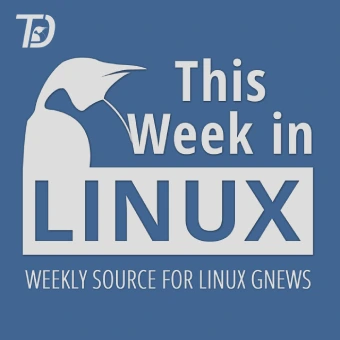
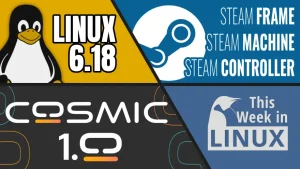

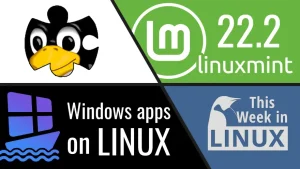
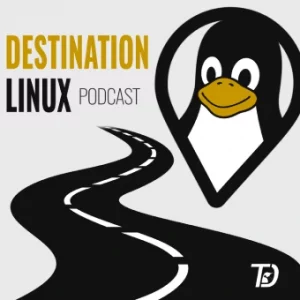

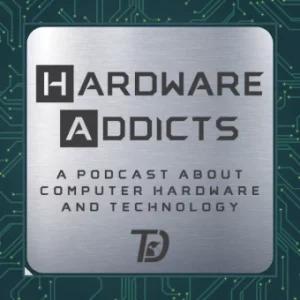
Start the discussion at forum.tuxdigital.com